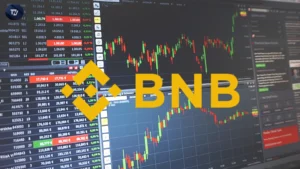
Is Pi Network’s Coin Actually a Scam/Shitcoin?
Pi Network recently made headlines in February 2025 following its mainnet launch. The cryptocurrency’s price surged to an all-time high of $2.98 on Feb. 26, briefly entering the top 10 by market cap. However, this excitement was short-lived as the coin’s value plummeted to just $0.5648 on April 3, a staggering loss of over 81% from its peak. This crash wiped out approximately $14.5 billion in market value, with Pi Network’s market capitalization shrinking from nearly $20 billion to a mere $4.56 billion.
The primary reason behind this downturn is the continuous unlocking of tokens. To date, Pi Network has released 4.9 billion tokens, and an additional 1.54 billion will be added to the market within the next year. This rapid increase in supply far outstrips demand, negatively impacting the value of the token. By July, monthly unlocks will reach a peak of 233 million tokens, significantly increasing the supply and likely pushing prices even lower.
Pi Network’s operational breakdowns, particularly with its mandatory Know Your Customer (KYC) process, have also contributed to the coin’s decline. The requirement to complete KYC before transferring tokens to the mainnet has led to persistent technical glitches, delays, and capacity issues. As a result, only approximately 14 million users were able to successfully migrate their coins, while the remaining 46 million users continue to be trapped in a perpetual limbo.
The absence of clear communication from Pi Network regarding these issues exacerbates the situation, fostering widespread frustration among its massive user base. The project’s inability to effectively address these concerns has eroded trust, with many users questioning the coin’s legitimacy.
Pi Network’s lack of real-world use and limited decentralized applications (dApps) are additional factors that have hindered the token’s value. Initial efforts, such as integrating with Telegram’s crypto wallet, have yet to yield significant engagement or drive meaningful growth.
Lastly, Pi Coin remains listed on smaller exchanges like Bitget, OKX, Gate.io, and MEXC, but it has been met with resistance from major platforms like Binance, Coinbase, Kraken, and Bybit. In fact, Ben Zhou, CEO of Bybit, openly referred to Pi Network as a “scam,” though the project’s developers vehemently deny these allegations.
In conclusion, while some might label Pi Network a scam due to its operational mismanagement, technical issues, and market dynamics, it is essential to distinguish between genuine fraudulent activity and other reasons for the coin’s decline. The project still maintains a strong, albeit frustrated, user base, which suggests that the issue lies more in management than in any intentional deceit.
Pi Coin has become a symbol of the turbulent crypto market, where hype often precedes reality.
Source: https://coinchapter.com/is-pi-networks-coin-actually-a-scam-shitcoin/?utm_source=rss&utm_medium=rss&utm_campaign=is-pi-networks-coin-actually-a-scam-shitcoin


